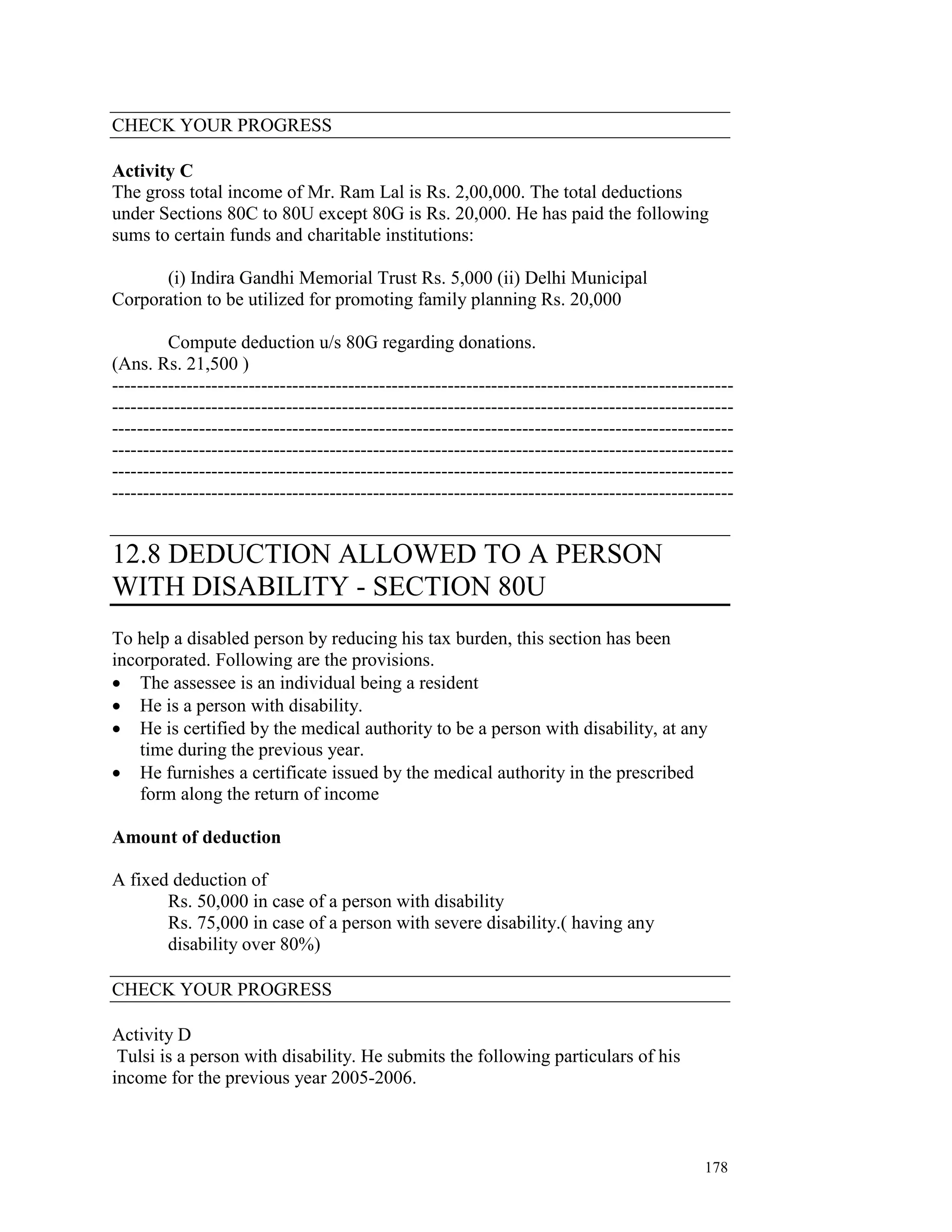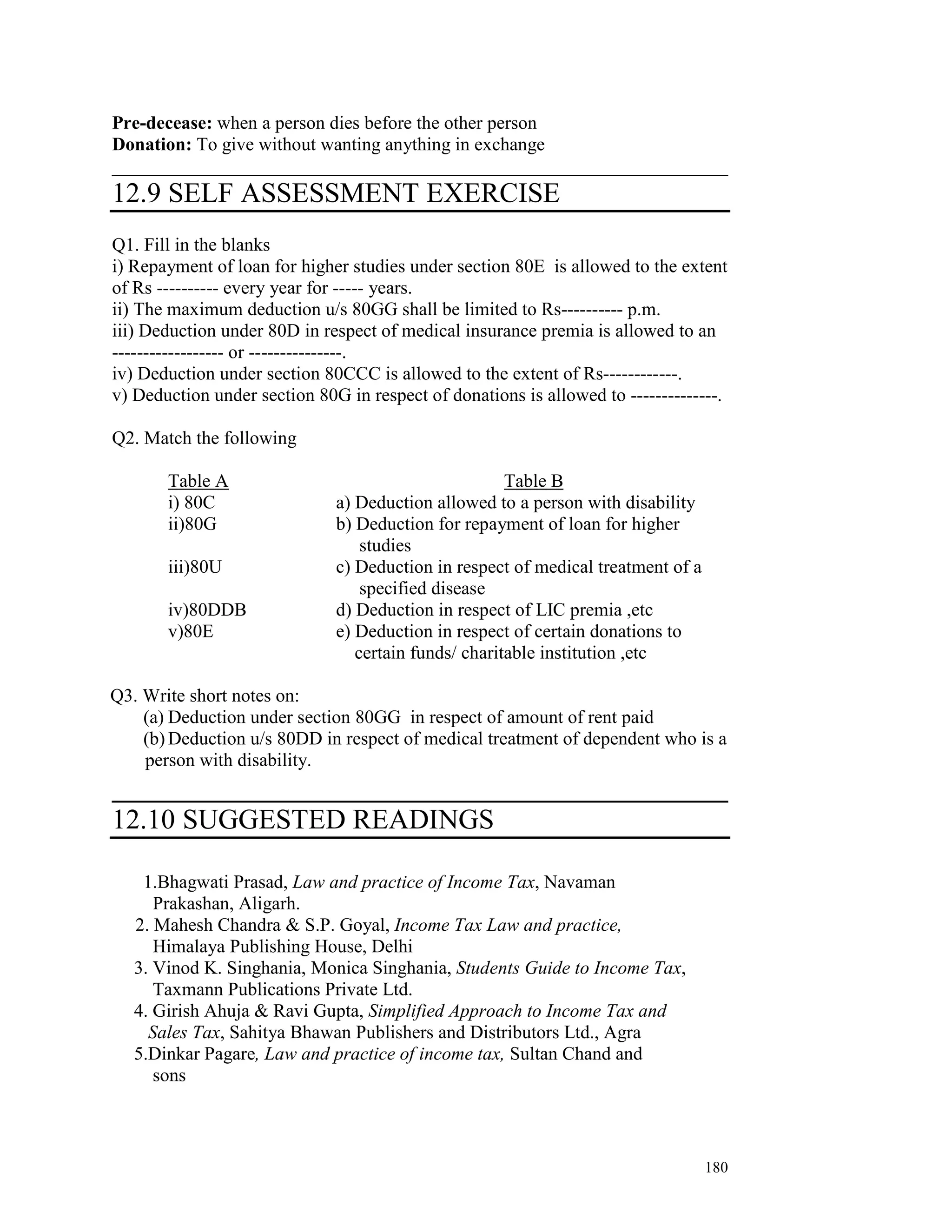This document provides an overview of various tax deductions available under sections 80C to 80U of the Indian Income Tax Act. It discusses deductions to encourage savings such as those for life insurance premiums, pension contributions, and provident funds. It also covers deductions for certain personal expenditures like medical insurance, treatment of dependent relatives with disabilities, and loan repayments for higher education. The document outlines eligibility criteria and limits for each deduction and provides examples to illustrate the calculations.
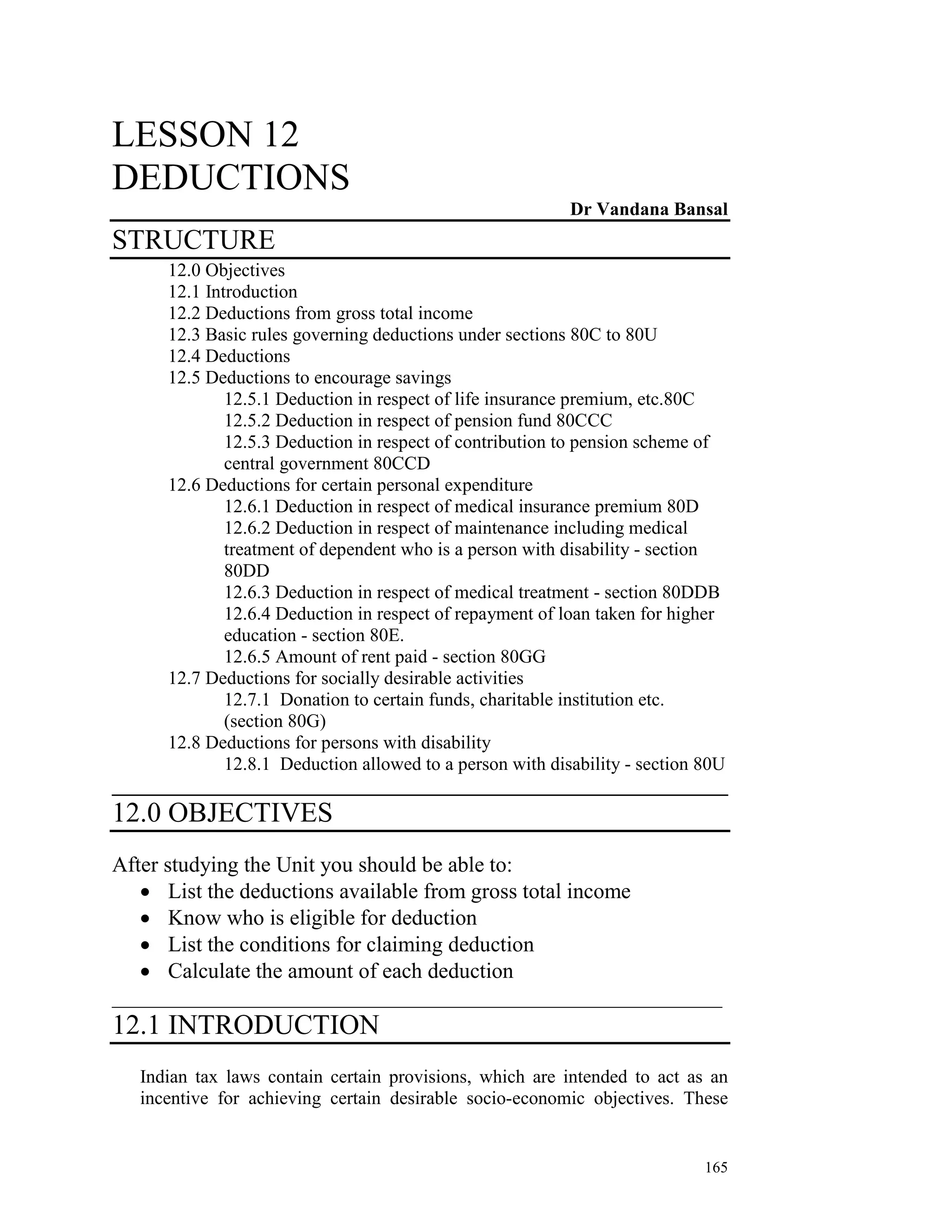
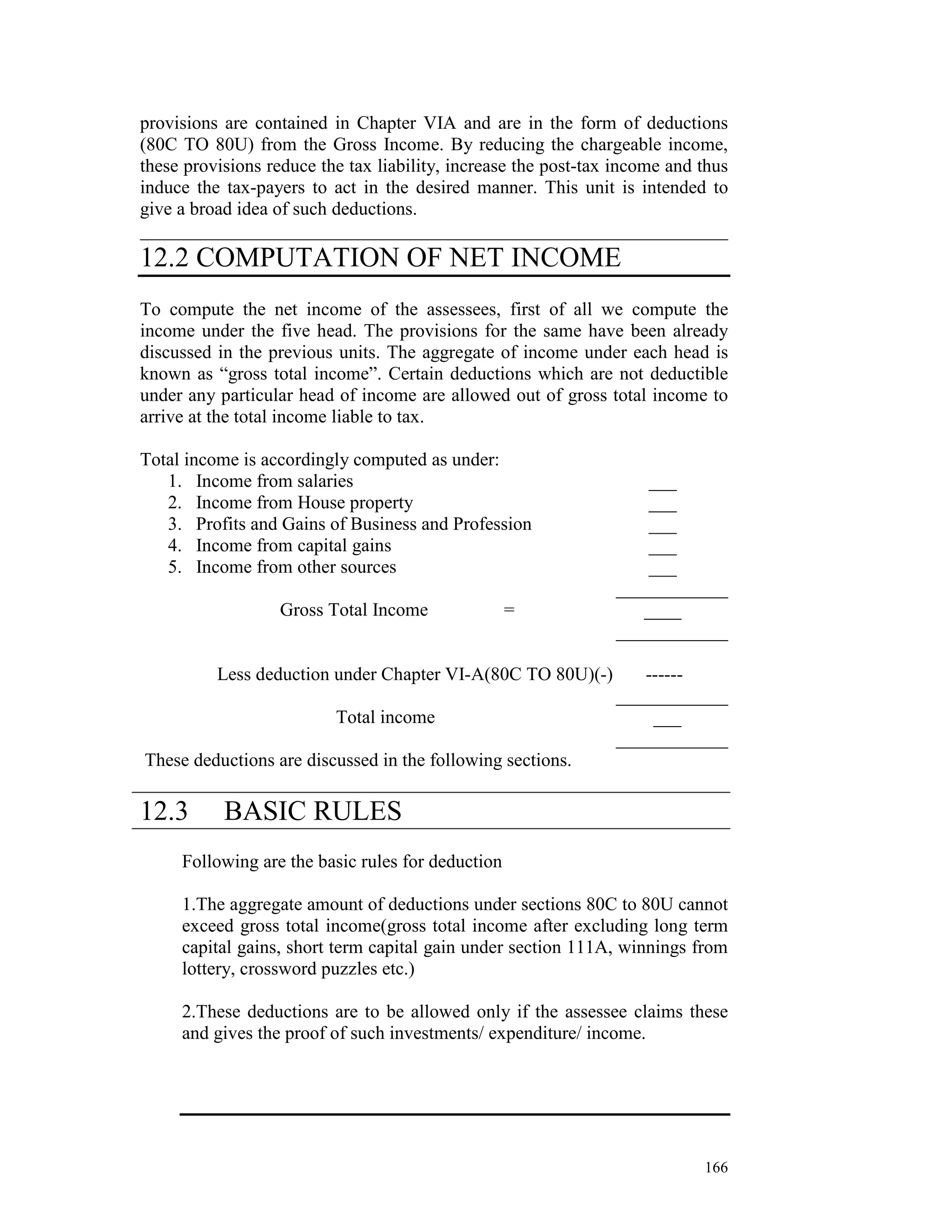

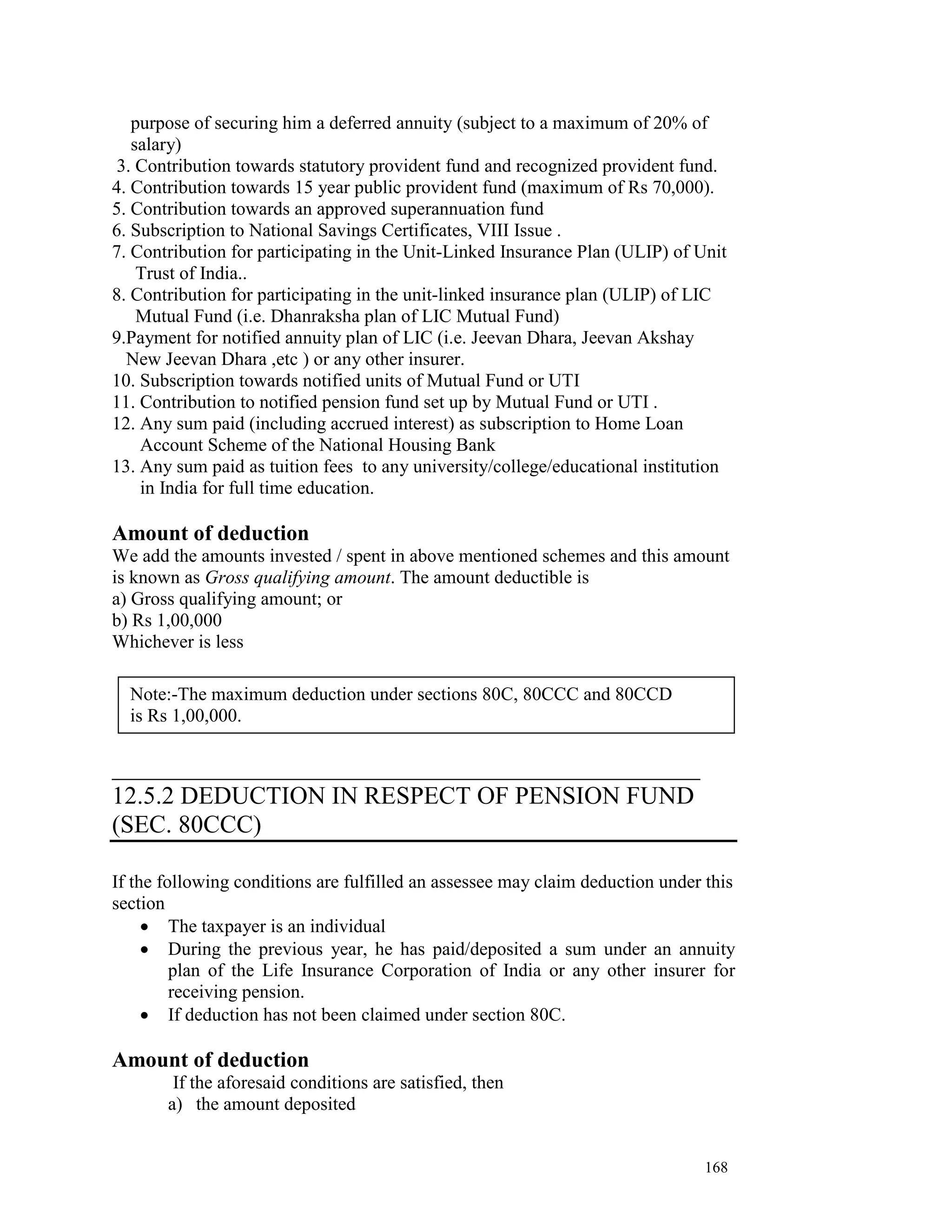

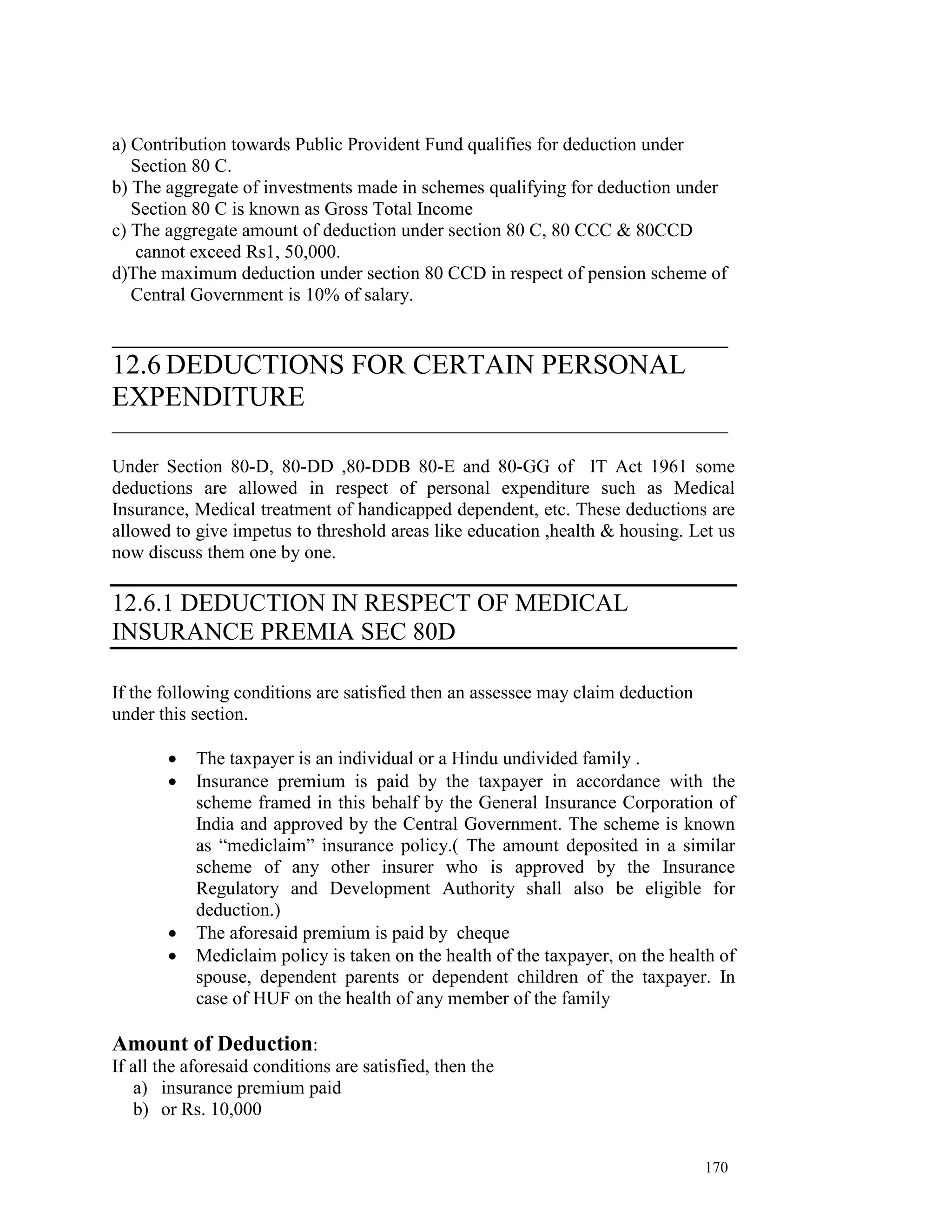
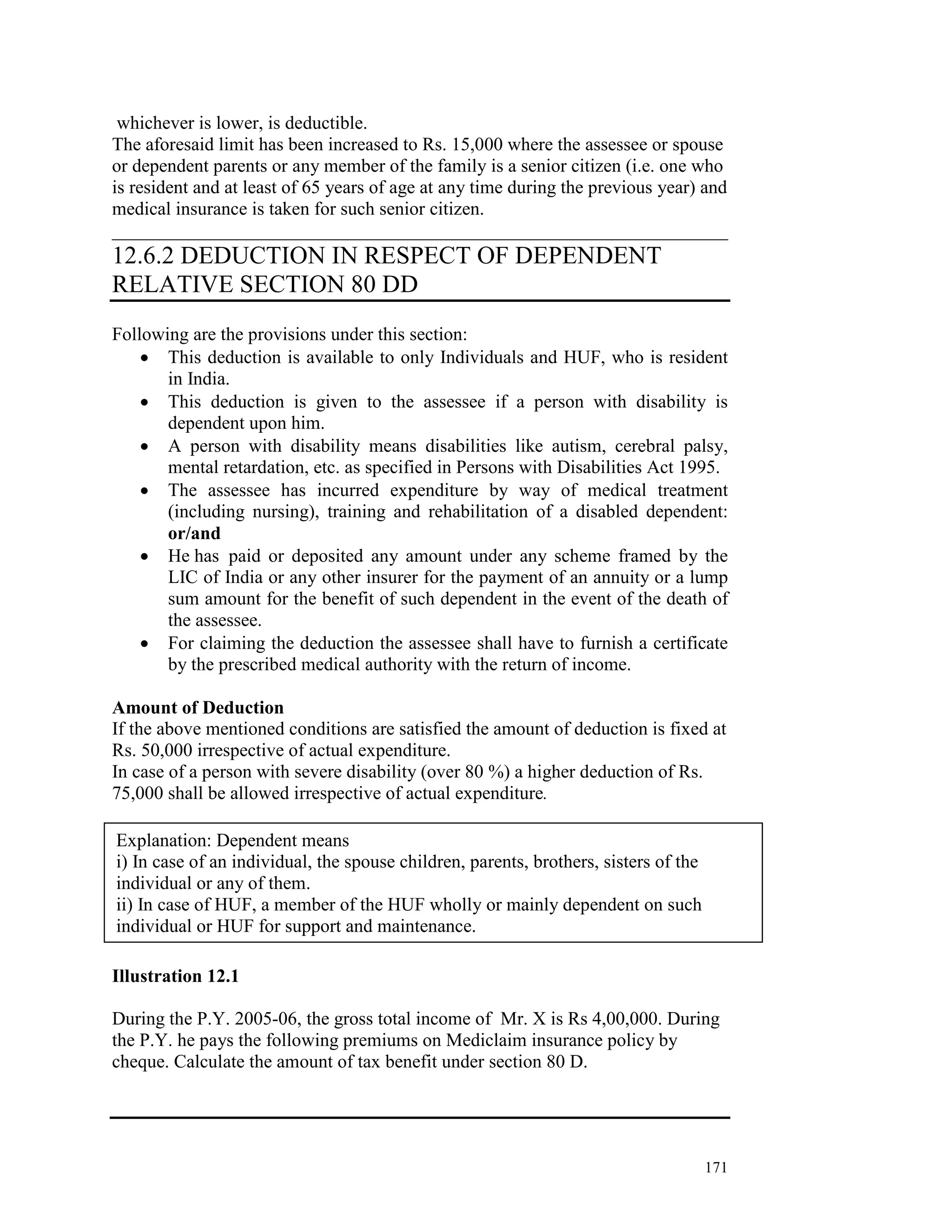

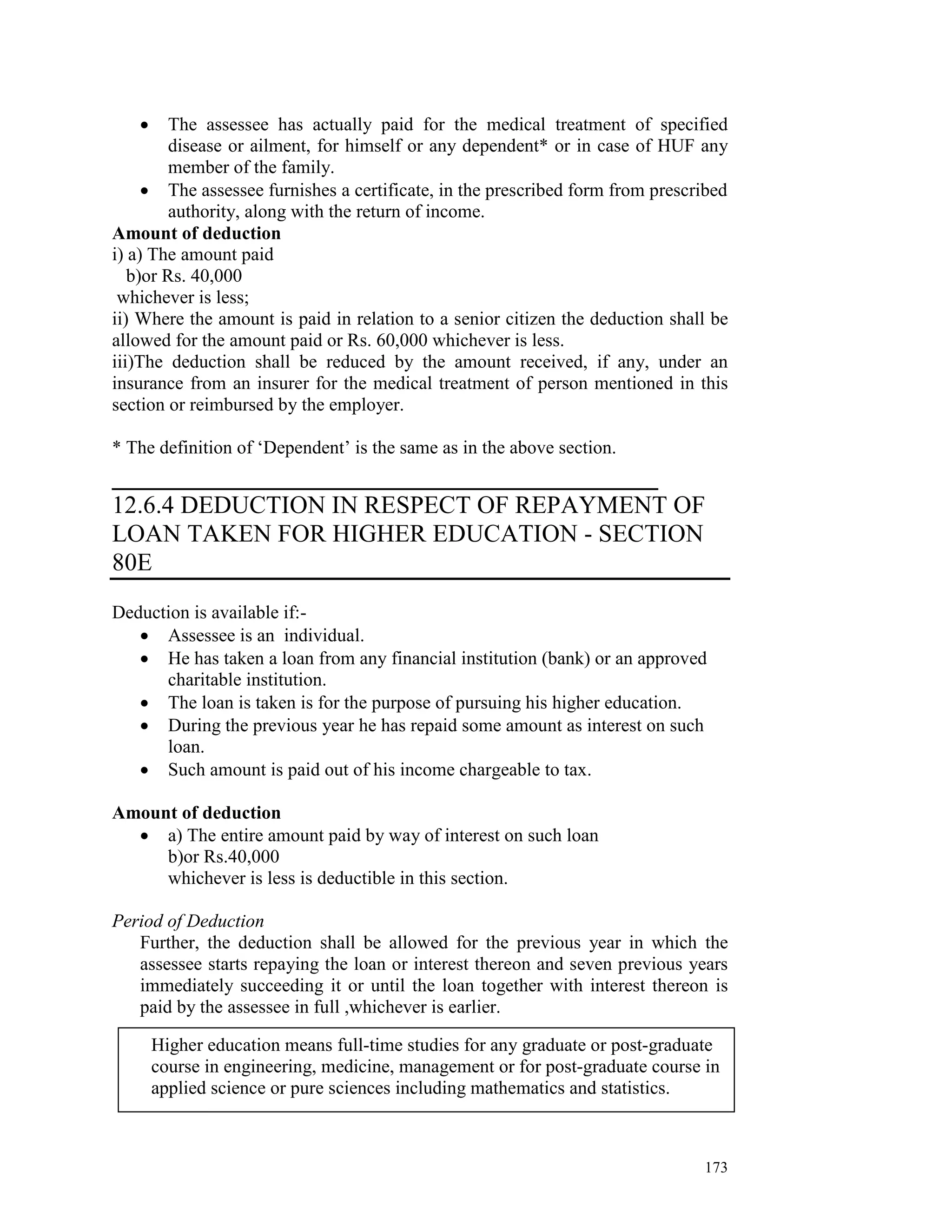
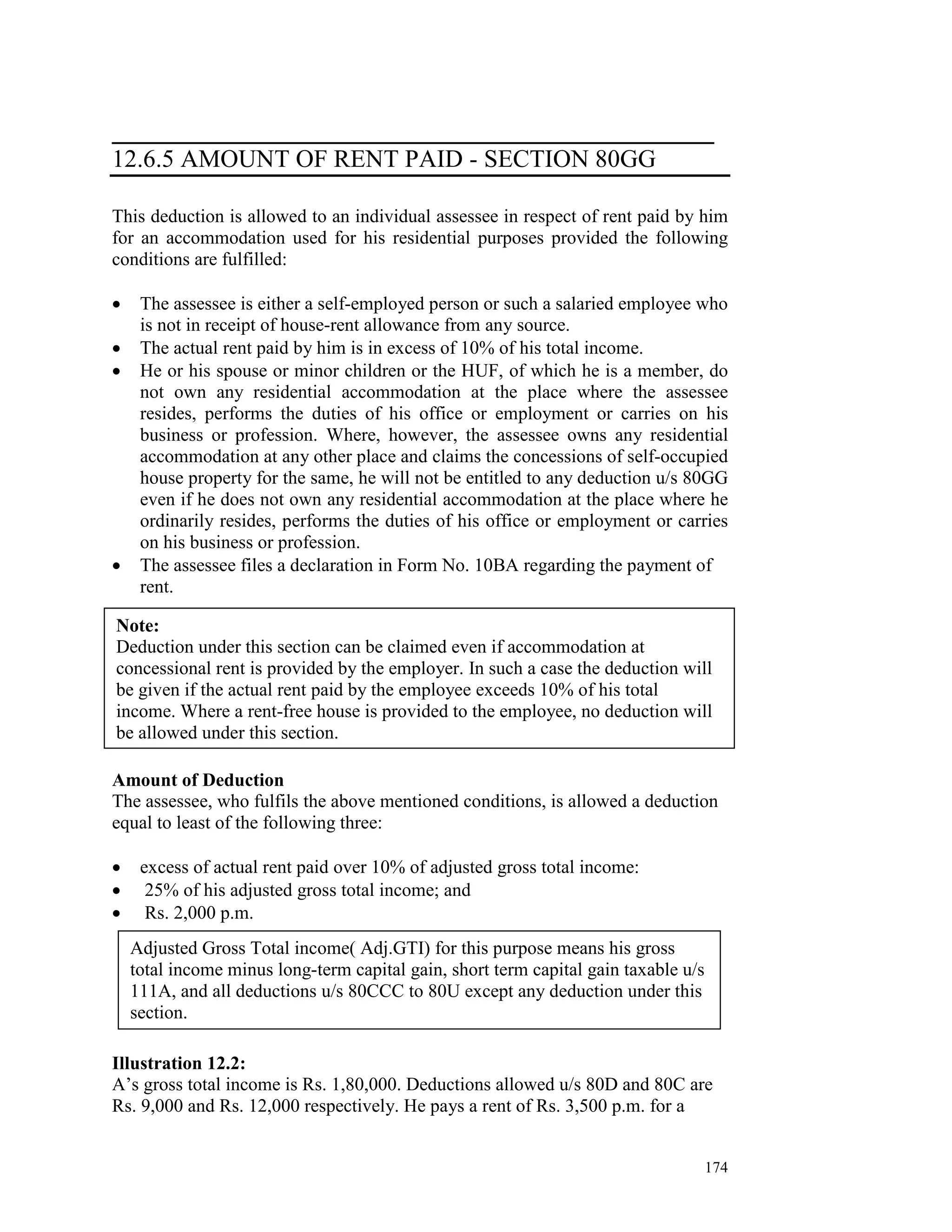
![three-roomed set. He does not own any residential accommodation. Compute his
total income for the assessment year 2006-2007.
Solution
Rs. Rs.
Gross total income 1,80,000
Less: Deduction u/s
80D - MIP etc. 9,000
80C – Insurance etc. 12,000
80GG - Rent Paid 24,000 45,000
Total Income 1,35,000
Note:
Adj. GTI = Rs [1,80,000 ( GTI) – 9,000 (80D) -12,000 (80C) ] = Rs. 1,59,000
Deductions u/s 80GG will be the least of the following:
i) Rs. 2,000 p.m. Rs.24,000
ii) Rent paid (Rs 42,000) - 10% of Adj.GTI ( Rs. 1,59,000) Rs.26,100
iii) 25% of Adj. GTI (Rs, 1,59,000) Rs 39,750
Rs. 24,000 is the least, hence, deductible
__________________________________________________________________
12.7 DEDUCTIONS FOR SOCIALLY DESIRABLE
ACTIVITIES
There are various funds created by Governments to take care of natural calamities
like earthquake, floods, etc. Similarly certain funds have been created to promote
social & economic welfare, & education. To promote these funds and so that
people contribute liberally to these funds, deduction has been provided in Section
80G for donations given by assessee to these funds.
____________________________________________
12.7 .1 DONATION TO CERTAIN FUNDS,
CHARITABLE INSTITUTION ETC. (SECTION 80G)
To encourage donations for social cause all assessees are entitled to this deduction
from their gross total income, if the donation is made in the previous year to the
following funds or charitable institutions. For the sake of convenience we have
divided the donations into four categories depending on the quantum of
deduction.
A. Donations made to following are eligible for 100% deduction without any
qualifying limit.
1. Prime Minister’s National Relief Fund
2. National Defence Fund
3. Prime Minister’s Armenia Earthquake Relief Fund
175](https://image.slidesharecdn.com/lesson-12deductions-120127094352-phpapp01/75/Lesson-12-deductions-11-2048.jpg)
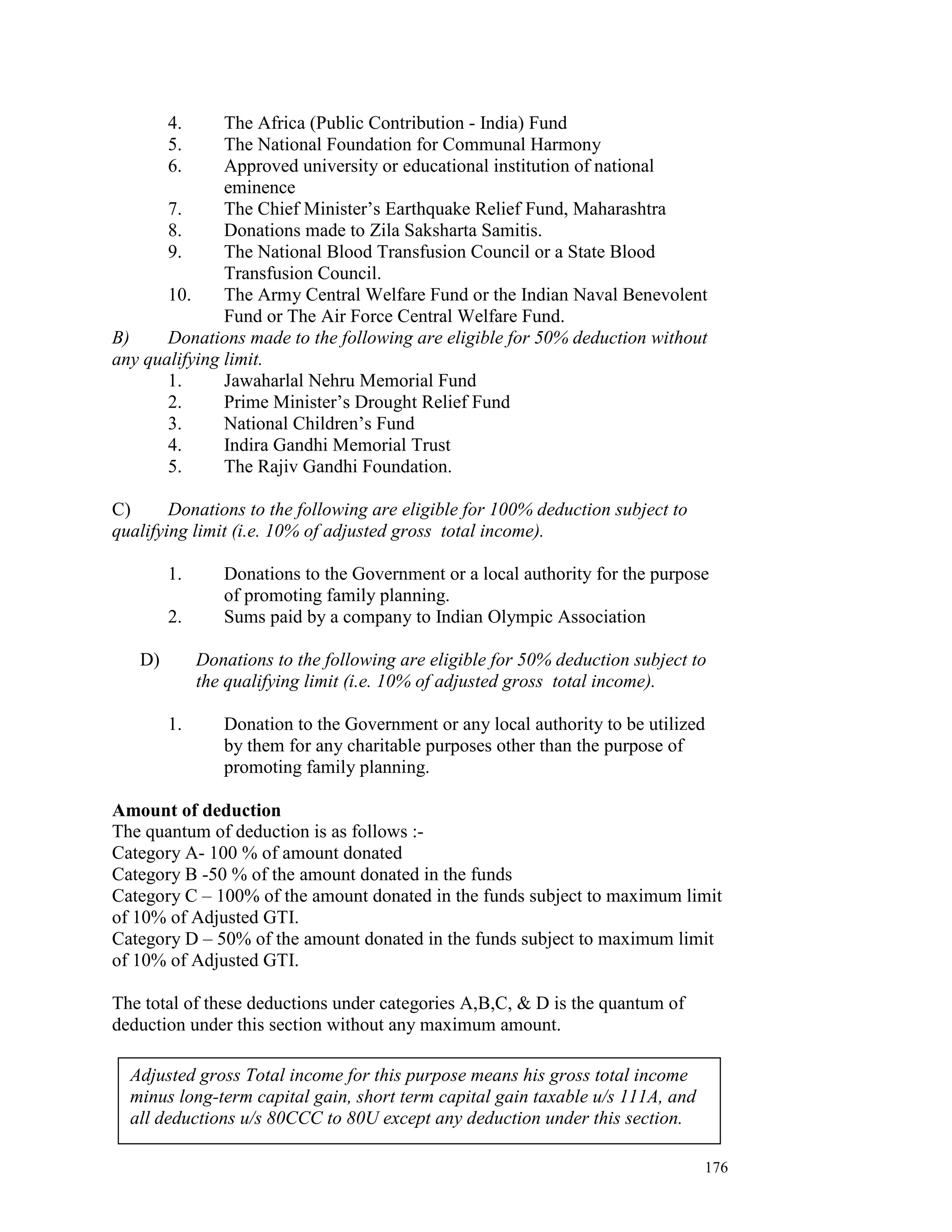
![Illustration 12.3 : X, an Indian citizen gives the following particulars of his
income and expenditure for the previous year 2005-2006.
Rs.
Business income 1,10,000
Long term capital gain 2,00,000
Short term capital gain on sale of shares taxable u/s 111A 10,000
Other short-term capital gain 5,000
Donation to the Prime Minister’s National Relief Fund 11,000
Donation to the Government of India for promotion of
family planning 3,000
Donation to an approved institution 12,000
Payment of medical insurance premium on own life 5,000
Determine the net income X for the assessment year 2006-2007
Solution:
Computation of Total Income of X
Rs.
Business Income 1,10,000
Capital gain: Long-term 2,00,000
Short-term u/s 111A 10,000
Other short-term 5,000
________
Gross Total Income 3,25,000
Deduction u/s 80D 5,000
Less: Deduction: u/s 80G 18,000 23,000
Total Income 3,02,000
Note:
Deduction u/s 80G is computed as under:
A Donation to PMNRF fully qualifies for deduction
and the rate of deduction is 100% 11,000
Qualifying amount of donations for family planning and Approved
Institution cannot exceed 10%of Adjusted gross total income
[i.e. 3,25,00 - 2,00,000(LTCG) - 10,000(STCG) - 5,000( 80 D)] of
Rs. 1,10,000 = Rs. 11,000
C Deduction on donation for family planning
on Rs. 3,000 @ 100% 3,000
D Deduction on other donation Rs.8,000 @ 50% 4,000
Total 18,000
177](https://image.slidesharecdn.com/lesson-12deductions-120127094352-phpapp01/75/Lesson-12-deductions-13-2048.jpg)
